The Full Text of “The Fly”
1Little Fly
2Thy summer’s play
3My thoughtless hand
4Has brushed away.
5Am not I
6A fly like thee?
7Or art not thou
8A man like me?
9For I dance
10And drink and sing,
11Till some blind hand
12Shall brush my wing.
13If thought is life
14And strength and breath,
15And the want
16Of thought is death,
17Then am I
18A happy fly,
19If I live,
20Or if I die.
-
“The Fly” Introduction
-
"The Fly" is one of English Romantic poet William Blake's visionary poems from Songs of Experience (the second volume of his groundbreaking 1794 collection Songs of Innocence and of Experience). The poem's speaker "thoughtless[ly]" swats a fly, then consoles himself by reflecting that his life and the fly's are basically the same: both are short and end in oblivion, so they might as well enjoy themselves until death "brush[es]" them away. However, this subtly ironic poem hints that the speaker's views on life and death might be a touch simplistic.
-
-
“The Fly” Summary
-
Oh, tiny fly: I've ended your joyful summer flight, unthinkingly killing you with a swipe of my hand.
Aren't I a fly just like you? And aren't you a man just like me?
After all, I'll only dance, drink, and sing until some unseeing hand wipes my life away.
If thought is born from living, breathing bodies, and if death is thus the absence of thought—
Well, then, I'll be a happy fly whether I'm alive or dead.
-
-
“The Fly” Themes
-
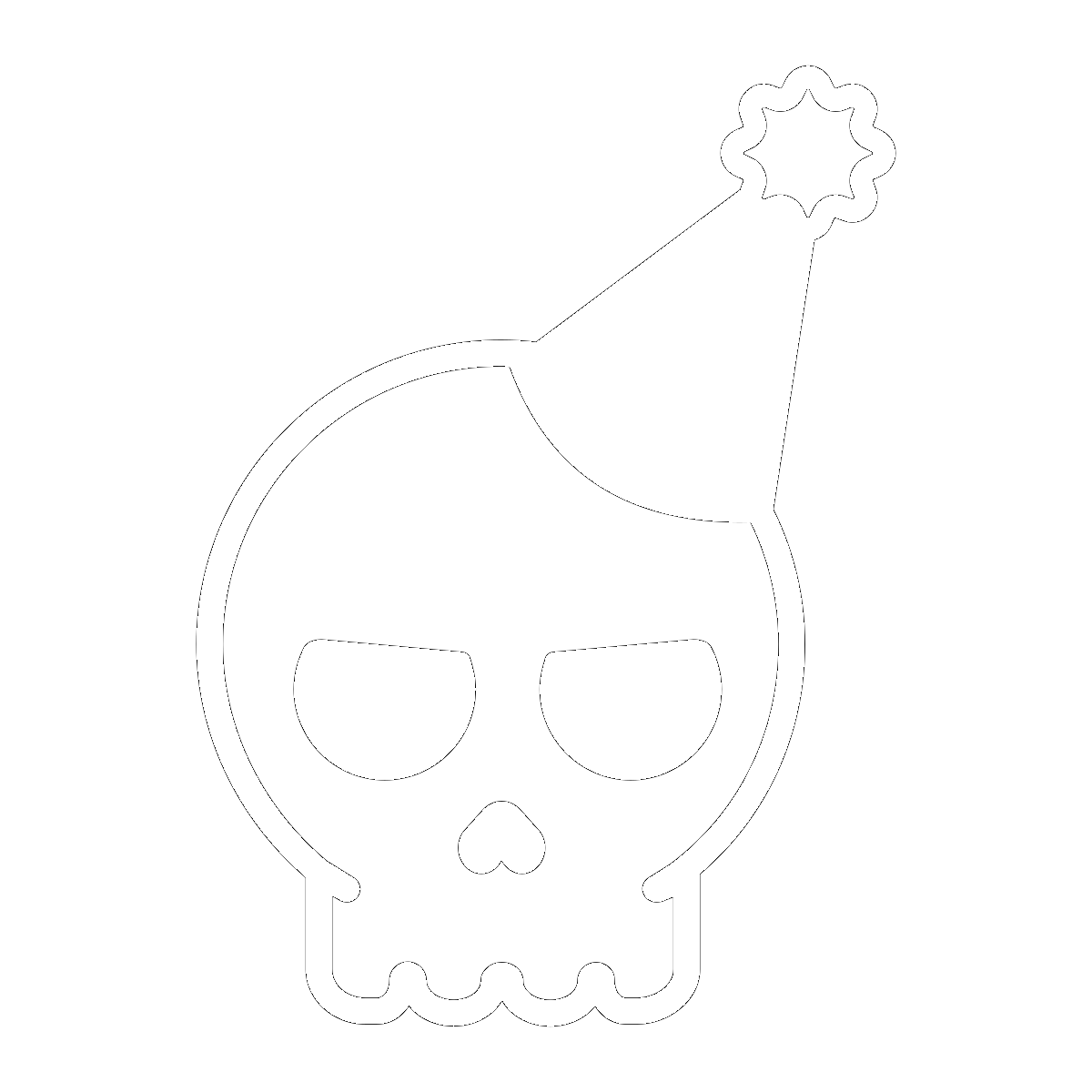
Death, Mortality, and Pleasure
Like a lot of poems about squashed flies, "The Fly" reflects on the brevity of life and the unpredictability of death. Death, the poem's speaker claims, strikes at random, without either warning or meaning; people should therefore enjoy their time on earth while they still can.
Regretting that his "thoughtless hand" has smacked a "Little Fly" dead right in the middle of its "summer's play," the speaker muses that, really, he and the fly are in the same boat. Just as he's killed this fly without even thinking about it (and perhaps without meaning to), "some blind hand" will one day "brush [the speaker's] wing": his life will end as suddenly and as arbitrarily as the fly's did. Symbolically, here, the fly plays the same role it has in countless other works of art, suggesting that life is brief and fragile.
The speaker's image of death coming from the swipe of "some blind hand" further suggests that the death-dealing universe (or God) is unfeeling, or at least arbitrary. In this speaker’s view, death is just the inevitable consequence of the universe's random and "thoughtless" motion. And if that's true, all that people need to do with their lives is "dance and drink and sing," enjoying themselves like "happy fl[ies]" until the meaningless oblivion of death strikes.
Readers should note, though, that the poem's author likely doesn't see eye-to-eye with the speaker about any of these ideas. The poem's potentially ironic phrasing (in which the speaker treats debatable ideas like "am not I / A fly like thee? / Or art not thou / A man like me?" as self-evident rhetorical questions) suggests that this speaker is rather shortsighted and limited in more ways than one!
- See where this theme is active in the poem.
-
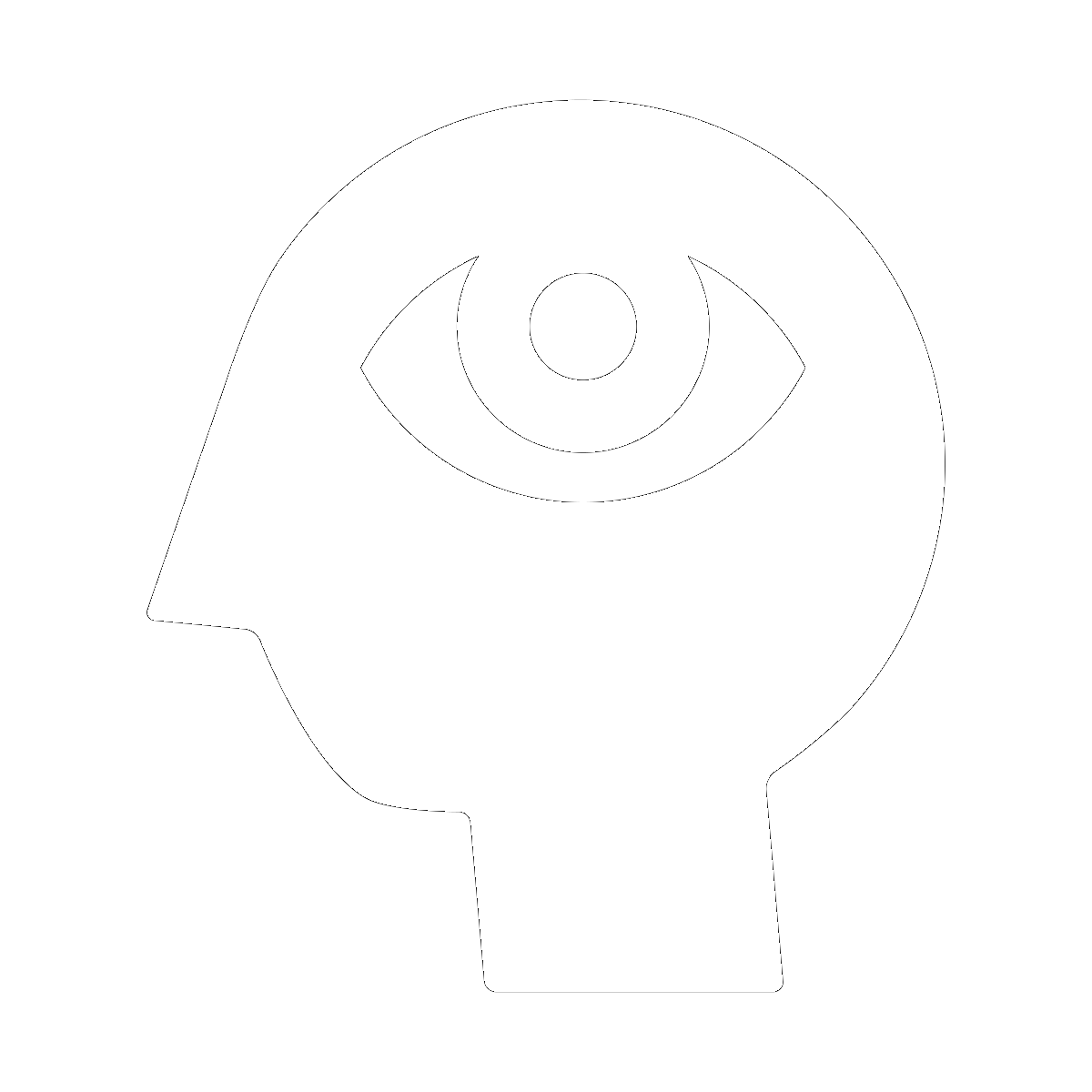
The Mystery and Wonder of Existence
After accidentally killing a fly, this poem’s speaker muses that he and the fly are just the same. Like a fly, the speaker says, he himself will only have "thought" (that is, consciousness) so long as he has "life and strength and breath": in other words, his experience of the world will only exist as long as his bodily life does, and his life will end just as suddenly and arbitrarily as the fly's did. If that's the case, then the speaker and fly alike can be "happy" whether they live or die: if "thought" dies with the body, they won't even know that they're dead, and can just blithely get on with the dancing and drinking and singing until the oblivion of death hits.
However, the poem's phrasing throws ironic doubt on this philosophy; the poet doesn't necessarily agree with the speaker! To believe that consciousness is just a mechanical function of the body (a view known as materialism) and that there's thus no difference between a man and a fly, this poem might suggest, is to oversimplify the complexity, mystery, and wonder of existence.
Remorseful over accidentally killing a fly, the poem's speaker tries to at least take a lesson from its death: "am not I / A fly like thee? / Or art not thou / A man like me?" he asks. In other words, he tries to use the fly's death as a reminder of life's brevity and his own mortality—a familiar and ancient piece of symbolism. Since human lives and fly lives get "brush[ed] away" just the same by "thoughtless hand[s]"—the fly's life by the speaker's hand, the speaker's life (eventually) by "some blind hand"—then the speaker might as well be a fly, and the fly might as well be the speaker.
Similarly, the speaker feels that he and the fly are the same because they have conscious "thought" only so long as they have "life and strength and breath": consciousness, in his view, is just a bodily process, the same as digestion or growth. If that's true, death will end "thought" just as it ends "breath"; his consciousness, like the fly's, will vanish into oblivion.
With these ideas in mind, the speaker can cheerfully resign himself to being a "happy fly": like the fly he swatted, all he has to do with his life is "dance and drink and sing," enjoying himself until death comes along and snuffs him out.
However: everything the speaker says, the poem's phrasing potentially undercuts. Many of the speaker's statements are in the form of apparently rhetorical questions that might not actually be so rhetorical. When the speaker asks "am not I / A fly like thee? / Or art not thou / A man like me?" for example, the reader could easily answer: Well, no! To say that there's no difference between a person and a fly is to overlook the fact that there self-evidently is. Similarly, the "if" in "If thought is life / And strength and breath" is a very big "if" indeed.
The poem thus might subtly suggest that the speaker's materialistic outlook, in which a human being's life and a fly's life are just bigger and smaller versions of the same physical processes, is a reductive and foolish one. Life and consciousness, the poem's language hints, are mysteries too big to be wrapped up in this speaker's tidy materialist package.
- See where this theme is active in the poem.
-
-
Line-by-Line Explanation & Analysis of “The Fly”
-
Lines 1-4
Little Fly
Thy summer’s play
My thoughtless hand
Has brushed away."The Fly" begins with a cry of regret. The speaker, alarmed to discover that he's just accidentally swatted a fly, addresses it with remorseful affection, calling it "Little Fly" and observing that his "thoughtless hand" has brought an end to its "summer's play." His language makes it sound more as if he's killed a duckling than a fly.
Of course, it's pretty easy to kill a fly "thoughtless[ly]": such a small, fragile bug can be "brushed away" completely by accident—or by "thoughtless" reflex, for that matter, if it lands on one's face. The idea that it's the speaker's "thoughtless hand" that does the brushing here supports that reflexive reading; this swatting was an instinctive act of the speaker's body, not his conscious choice.
Most fly-swatting is so "thoughtless" that the swatter barely even registers what they've done. This speaker, however, is pausing to consider this everyday swatting more carefully. Addressing the fly directly, he treats it as a creature that was enjoying its "summer's play": in other words, as a conscious being that would probably have preferred to remain alive, just like the speaker himself.
In these first few lines, readers familiar with fly symbolism might get the sense that this will be a poem about how fragile and temporary life is. Flies traditionally symbolize death both because they're so easily squashed and because they tend to turn up where dead meat is available. But the speaker's response to the fly will go much deeper than a reflection on mortality. He's interested not just in the fact that he and the fly are both mortal, but that he and the fly are both conscious (or were, anyway). This will be a poem about the mysterious relationship between the mind and body.
That might come as a surprise to readers who glance at the poem's form. In a mere five quatrains of short, thumping dimeter lines (that is, lines with only two strong stresses apiece: "Little Fly"), there might not seem to be much room to explore consciousness itself. The singsong ABCB rhyme scheme similarly suggests nursery rhymes more than philosophy.
But as is so often the case in Blake's Songs of Innocence and of Experience, simplicity is deceptive.
-
Lines 5-8
Am not I
A fly like thee?
Or art not thou
A man like me?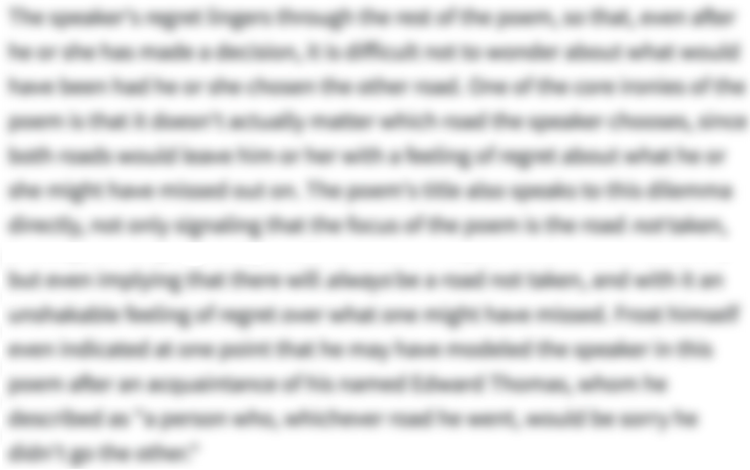
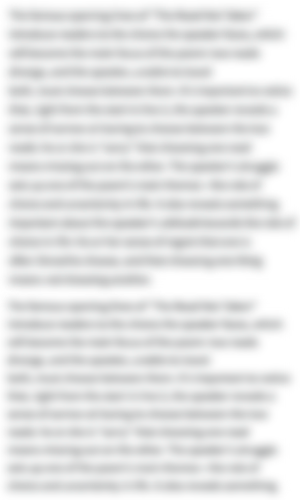
Unlock all 340 words of this analysis of Lines 5-8 of “The Fly,” and get the Line-by-Line Analysis for every poem we cover.
Plus so much more...
Get LitCharts A+ -
Lines 9-12
For I dance
And drink and sing,
Till some blind hand
Shall brush my wing. -
Lines 13-16
If thought is life
And strength and breath,
And the want
Of thought is death, -
Lines 17-20
Then am I
A happy fly,
If I live,
Or if I die.
-
-
“The Fly” Symbols
-
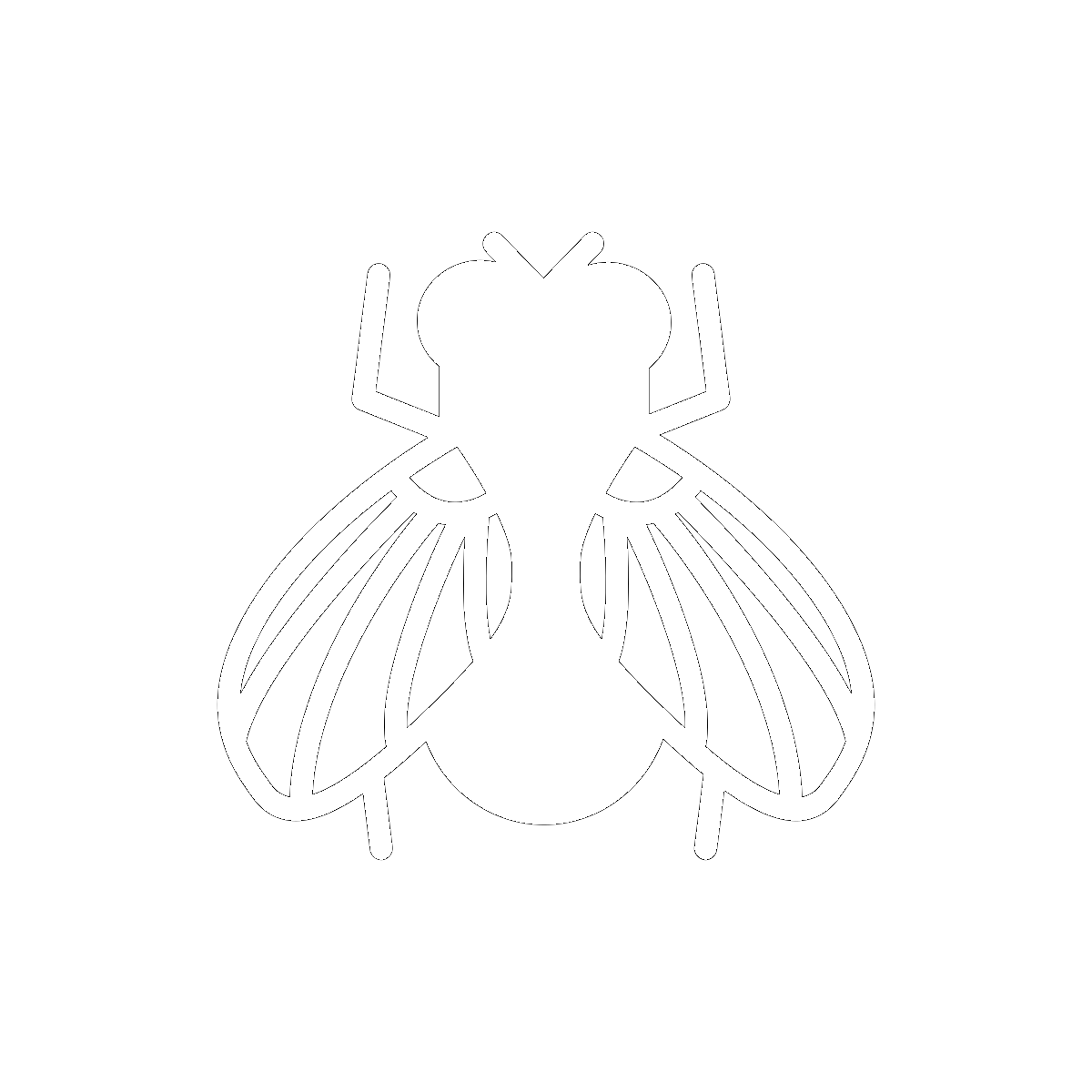
The Fly
The speaker takes the fly he's just squashed as a symbol of death and mortality. In doing so, he's drawing on ancient tradition: flies, both easily squished and associated with rotting corpses, are doubly appropriate as images of life's brevity.
In saying that he's a fly, the speaker is saying that his life is just as brief and fragile as that of the fly he just swatted.
- See where this symbol appears in the poem.
-
-
“The Fly” Poetic Devices & Figurative Language
-
Metaphor
The speaker's central metaphor—that he is a fly and the fly is him—raises the questions at this complex poem's heart.
Depicting himself as a fly just like the one he's squashed, the speaker at first seems to be drawing on a familiar symbolic tradition that makes flies the representatives of life's brevity and fragility. Like Gloucester in King Lear, he's saying that "as flies to wanton boys are we to the gods": the "blind hand" of fate or God smacks people down just as arbitrarily as a kid kills a fly.
The metaphor gets more complicated, though, when the speaker suggests that if he's basically a fly, the fly is also basically a "man like me." Both of them, he argues, "dance and drink and sing" until the moment of death, and both will completely lose "thought" (or consciousness) as soon as "life / And strength and breath" are gone.
This metaphor is essentially making a materialist argument: that is, it's suggesting that consciousness is just a biological function and that one life is therefore identical to another. A human and a fly are both just bits of animate meat enjoying themselves until they're dead.
Given that Blake himself wrote that the physical world was just the visible portion of the vast, complex, interconnected Soul that animated the universe, he likely did not agree with this speaker's views. The deceptively straightforward metaphor of man-as-fly and fly-as-man thus invites readers to consider what's missing in the speaker's account of the world.
- See where this poetic device appears in the poem.
-
Repetition
-
Rhetorical Question
-
Alliteration
-
-
“The Fly” Vocabulary
Select any word below to get its definition in the context of the poem. The words are listed in the order in which they appear in the poem.
- Thy, thee, thou
- The want of thought
Thy, thee, thou-
Old-fashioned ways of saying "you" (thee, thou) or "your" (thy).
- See where this vocabulary word appears in the poem.
-
Form, Meter, & Rhyme Scheme of “The Fly”
-
Form
"The Fly," like many of William Blake's Songs of Innocence and of Experience, uses a deceptively simple form to investigate vast questions. The poem is built from five four-line stanzas (or quatrains) in accentual dimeter (that is, lines with two strong stresses apiece: "Little Fly"). The lines are strikingly short, never more than four words long; every single word here counts.
On the surface, then, this is a short, simple poem built on familiar symbolism. Writers long before and long after Blake have used flies as images of life's brevity. As ever with Blake, though, there's more here than meets the eye at first. The poem's apparent claim that "thought is life / And strength and breath" is qualified by a big "If."
-
Meter
"The Fly" is written in accentual dimeter. That means that each line uses two strong stresses, but not a consistent pattern of metrical feet.
For instance, listen to the rhythms of the last stanza:
Then am I
A happy fly,
If I live,
Or if I die.Accentual meter feels earthy and folky; here, those one-two stresses hit like marching feet or a hand pounding a table (perhaps "thoughtless[ly]" whacking a fly on the way). These short, punchy lines give the poem a deceptive simplicity; perhaps they even help to suggest the over-simplicity of the speaker's worldview.
-
Rhyme Scheme
"The Fly" uses this simple rhyme scheme nearly all the way through:
ABCB
This old, old pattern might be familiar to readers from ballads and nursery rhymes. Blake often used traditional, folky flavors of rhyme and meter in his Songs of Innocence and of Experience, smuggling grand ideas in plain packages.
Notice, though, that there's a variation here, right at the very end. The final stanza runs like this:
AABA
All those tight, neat A rhymes make it seem as if the speaker's conclusion—that it's an equally "happy" fate to live or die—is as simple as dusting one's hands off. But not all is as it seems: the poem might equally be read as questioning this idea. The first word in "If thought is live / And strength and breath" is a very big "if" indeed.
-
-
“The Fly” Speaker
-
The reader learns nothing about this poem's elusive speaker beyond the fact that he's just accidentally killed a fly. From that moment on, everything the speaker says is more a riddle than a statement of belief or a revelation of personality. On a surface level, the speaker seems to say that the lesson he takes from the fly's death is to be perfectly "happy" either to live or to die: if the body's "life" is the source of consciousness, and consciousness therefore ends at death, then why does one's own death mean anything more than a fly's?
Notice, however, that the word with which the poem introduces that philosophy is a great big "if"! The materialist worldview the speaker lays out here isn't necessarily what the author believes. That wiggle room for irony is one of the hallmarks of Blake's Songs of Innocence and of Experience. (Compare, for instance, "Holy Thursday," in which the pious speaker's pleasure in watching a parade of orphans reveals the author's outrage at society's hypocritical cruelty to children.)
-
-
“The Fly” Setting
-
The only thing readers learn about this poem's setting is the season: the fly the speaker accidentally kills in the first stanza was enjoying its "summer's play," winging around in the sunshine, before its untimely demise. The general vagueness of the setting suggests that the questions about life, death, and consciousness the speaker bats around here are timeless and universal ones, not tied to any particular era or place.
That the fly dies in the summer, though, does suggest that death doesn't obey any of the usual laws of symbolism. Summer is traditionally imagined as a time of vibrant life—but that just doesn't matter to the "blind hand" of death, which falls seemingly at random.
-
-
Literary and Historical Context of “The Fly”
Literary Context
William Blake (1757-1827) is a poet unlike any other. Often considered one of the first of the English Romantics, he also stands apart from any movement as a unique philosopher, prophet, and artist.
Blake first printed "The Fly" in Songs of Experience (1794), the second volume of his important collection Songs of Innocence and of Experience. This two-part book examines what Blake called "the two contrary states of the human soul." Many of the poems in Songs of Innocence have a counterpart in Songs of Experience, a twin poem that reads the same subjects from a new perspective. For instance, "The Lamb" and "The Tyger" both explore creation, divinity, and nature, but in very different ways.
Blake conceived most of his poems not just as text, but as illuminated manuscripts in which images deepen (and sometimes complicate or contradict) the meanings of the words. (See an image of "The Fly," linked in the Resources section, for one excellent example.)
Blake designed, engraved, printed, painted, and published his works himself, using a technique he called the "infernal method." In this process, he painted his poems and pictures on copper plates with a resilient ink, then burned away the excess copper in a bath of acid—the opposite of the process most engravers used. But then, Blake often did the opposite of what other people did, believing that it was his role to "reveal the infinite that was hid" by custom and falsehood.
Even among the often countercultural Romantics, then, Blake was an outlier. Samuel Taylor Coleridge—himself no stranger to a wild vision—once remarked that he was "in the very mire of common-place common-sense compared with Mr. Blake."
While Blake was never widely known during his lifetime, he has become one of the most famous and beloved of poets since his death, and writers from Allen Ginsberg to Olga Tokarczuk to Philip Pullman claim him as a major influence.
Historical Context
William Blake was a deeply religious man, but he was highly critical of organized religion. He was born to a family of Dissenters, a group of English Protestants who broke away from and rebelled against the Church of England (and instilled in Blake an early distrust of the religious status quo). He generally saw top-down religious structures as getting in the way of a direct relationship between humanity and God.
For that matter, he believed—and memorably said, in The Marriage of Heaven and Hell, that "everything that lives is holy." To Blake, the whole world was infused with divinity, which people could see if only they opened their eyes to the "infinite that was hid" behind the illusions of custom and daily life. In this, he (like many of his Romantic contemporaries) rebelled against the rationalistic worldviews of 18th-century Enlightenment philosophers.
-
More “The Fly” Resources
-
External Resources
-
The Poem Set to Music — Listen to a musical version of the poem by Cosmo Sheldrake.
-
The Illuminated Poem — See the poem as Blake originally imagined and printed it: as an illuminated manuscript.
-
A Biography and More — Find a wealth of resources on Blake at the British Library's website.
-
Blake's Visionary View — Watch a short documentary about Blake's spiritual visions.
-
More of Blake's Works — Visit the William Blake Archive to see more of his work.
-
Blake's Beliefs — Read a short article on Blake's art that outlines his spiritual views (and his loathing of mechanistic philosophies).
-
-
LitCharts on Other Poems by William Blake
-








